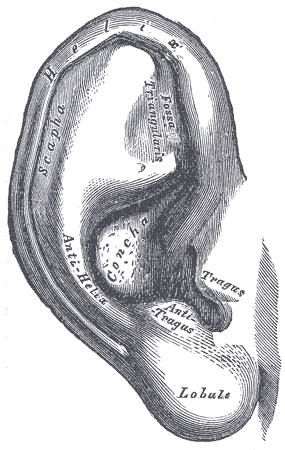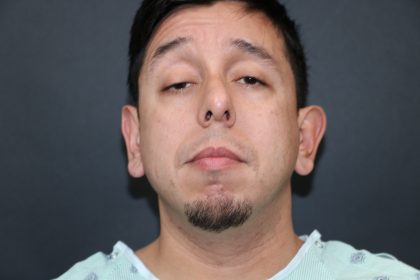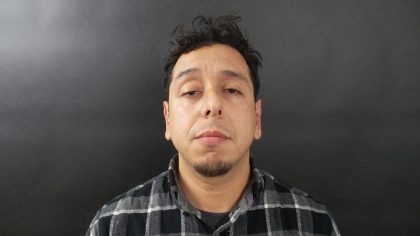Contents
What Is Otoplasty?
Otoplasty is the correction of misshapen or protruding ears, whether through surgical or non-surgical means. Otoplasty can be performed on adults as well as children, so long as the patient’s ears are fully developed. It is more commonly performed on young children due to their ears being more malleable than those of adults, but also as a means of avoiding dreaded childhood teasing. Many people have suffered humiliation from cruel, schoolyard taunts about their large, protruding ears. This can be detrimental to anyone’s confidence and cause constant worry about the appearance of your ears. For both infants and adults alike, Dr. Joshua Korman can perform Otoplasty to sculpt, pin back, or reduce the size of ears.

Deformity of the ears can be present from birth or caused by sudden trauma. In either case, Otoplasty is a means of restoring the ear to a more natural size and/or shape. This procedure varies depending on what you’re specifically looking to correct. Dr. Korman usually begins his Otoplasty procedure by making a small incision behind the ear, where scarring is minimal and not visible to the eye. At this point, cartilage can be trimmed or sculpted to your wishes. The ears can also be pulled back if they are protruding. Sometimes, Dr. Korman will remove no cartilage, instead trimming skin and just folding the cartilage back. Again, to best decide what would produce your ideal results, a consultation with Dr. Korman is necessary. Upon completion of your Otoplasty, stitches will be used to close the incision. After the necessary recovery time, you will be left with beautifully proportionate ears.
Before and After Photos
Common Ear Shapes
Prominent Concha
The center portion of the ear is overly shallow or exceedingly wide. In some cases, the concha can appear both shallow and wide.
Protruding Earlobe
As it sounds, this is when the earlobe is an abnormally larger than an average earlobe.
Underdeveloped Antihelical Fold
The misshaping of the top third of the outer ear. Normally the Antihelical Fold will curve the ear and bringing it closer to the head. When it is not developed, the rim of the ear is stretched and it causes the ear to stick out.
Constricted Ear
A constricted ear is when the outer circumference of the ear is taut. In turn this forms an overly constricted cupping effect.
Cryptic Ear
The ear does not fully project from the side of the head and, in a sense, is hidden. This occurs when the helix, or rim of the ear is enclosed underneath the skin.
Macrotic Ear
In the case of a Macrotic ear, the surface of the ear is abnormally large. The ear is otherwise ordinary, but the visible aesthetic part of the ear is oversized.
Stahl’s Ear Deformity
This is a deformity on the very top of the ear creating a point and causing an elf-like shape.
Question Mark Ear
The ear appears to be in the shape of a question mark ( ? ) due to the top portion of the ear curving and protruding outward.
Preparing For Surgery
You will be given step by step instructions which will cover how you are to prepare for surgery, what will happen the day of, and how to care for yourself after the procedure. Before you undergo surgery, you will need to get certain tests and evaluations completed, those of which will be determined by Dr. Korman. You are to stop smoking in advance, steer clear of anti-inflammatory drugs, and take specific medications prescribed or given to you by Dr. Korman. Make sure your post-surgery transportation is already arranged, as you will be unable to drive yourself home. It is recommended to have someone care for you throughout the postoperative night to help you with.
Corrective Surgeries
Exterior Ear Fold Manipulation
This is accomplished through:
- Suturing of the cartilage – Dr. Joshua Korman will use suturing, or the stitching of a wound, as a means to manipulate the ear. The outcome will be a more pronounced upper ear.
- Stenstrom technique of anterior abrasion – Abrasion is used as a means to manipulate the cartilage. This will cause the ear to angle away from the abrasion into the desired direction.
- Full-thickness incisions – Incisions are made along the rim of the ear. Tubing is then placed in the incisions in order to create a normal-looking bend.
Conchal Alteration
This is accomplished through:
- Suturing – Suturing is used to decrease the angle of the concha.
- Conchal excision – Removing a crescent-shaped piece of cartilage from the concha in order to lower the height of the inner surface of the ear.
- Combination of suturing and conceal excision – A combination of both suturing and conchal excision may be used if deemed appropriated for you. Suturing is done in minimally noticeable place on the ear. This process decreases the chances of visibility of operation.
Ear Augmentation
Ear augmentation can be executed by adding additional cartilage (retrieved either from the ear or rib cage) to parts of the ear that need additional structure. This is performed for patients that have minimal to no structure whatsoever of the outer ear.
Ear Reduction
Ear reduction refers to reducing the size of either one or several areas of the ear. Incisions are made in unpronounced places on the ear to minimize noticeability of scars.
Ear Pin-Back
Dr. Joshua Korman will make an incision behind the ear in order to pull it back, closer to the head. Excess skin will be extracted and the ear will be sutured to it’s desired proportioning and positioning.
Procedures For Infants
Taping
Taping is a common solution for infants since their ears are extremely malleable in their early stage of development. The continuous placement of the tape from the ears to the head in time flattens the appearance of the ears. This process is used for protruding ears, but more serious deformities may require additional or alternative methods.
Physician-Designed Splints
This is a non-invasive approach which uses custom splints. Dr. Korman will attach them to the ear to reshape them to the desired look.
Ear Fold Implant
Ear Fold Implant is a small surgical procedure in which implants are used in the necessary locations to reshape the ear. The implants are placed in the ear through a small incision made by Dr. Korman. This can be performed under local anesthetic and the implant can remain indefinitely if necessary. The intention is for the cartilage to mold to the shape of the implant.
EarWell Infant Ear Correction System
This is the process of mechanically molding the shape of the cartilage. Due to the infant’s high levels of estrogen, it is easier and presents more of a success rate to mold the shape of an infant’s ear. Some examples of when this technique would be used are for the presence of Stahl’s Ear and Prominent Ears.
Ear Buddies
Splints attached with tape are used to correct the growth of the ear. Using this technique allows for the outer ear to mold to the newly desired shape while the inner ear remains unaffected. The splints are placed in the rim of the upper ear and fastened with tape that will curve around the ear. If there is an absence of the the rim on the upper ear, the splint is placed marginally lower, and the ear is rolled over the splint. Depending on the age of the infant will determine the amount of time the Ear Buddy will need to be worn.
What Should I Expect Following an Otoplasty Procedure?
Following your Otoplasty, Dr. Korman will wrap your head in a thick bandage, and you should avoid lying on your side. A lighter bandage will later replace the original; however, you should avoid strenuous activity. Recovery may differ for adults and children, and also varies from patient to patient. To discuss the recovery you can expect, contact Dr. Korman at either his Mountain View, Carmel, or San Jose office to set up a consultation.
How Much Will My Procedure Cost?
The cost of this procedure will vary depending on the extent of surgery required for ideal results. Dr. Korman would love to discuss this procedure with you and assess a cost at your initial consultation at any of his 3 offices. Patient financing is offered.
At all 3 facilities, Dr. Joshua Korman has created a safe, nurturing environment for you to embark on your plastic surgery endeavor. He urges his patients to remember that a healthy lifestyle is necessary for optimum results and that you should feel comfortable with each step of your Otoplasty. All of this can be discussed at your consultation, where you will have a chance to meet the dedicated, experienced staff.
Call Us For A Consultation
Interested in ear reconstruction? Dr. Korman’s has many patients who love the results of this procedure, and many experience a confidence boost. If you have any questions, concerns, or comments, we will gladly address them! Contact us today to set up a consultation at either our Mountain View, Carmel, or San Jose location.


